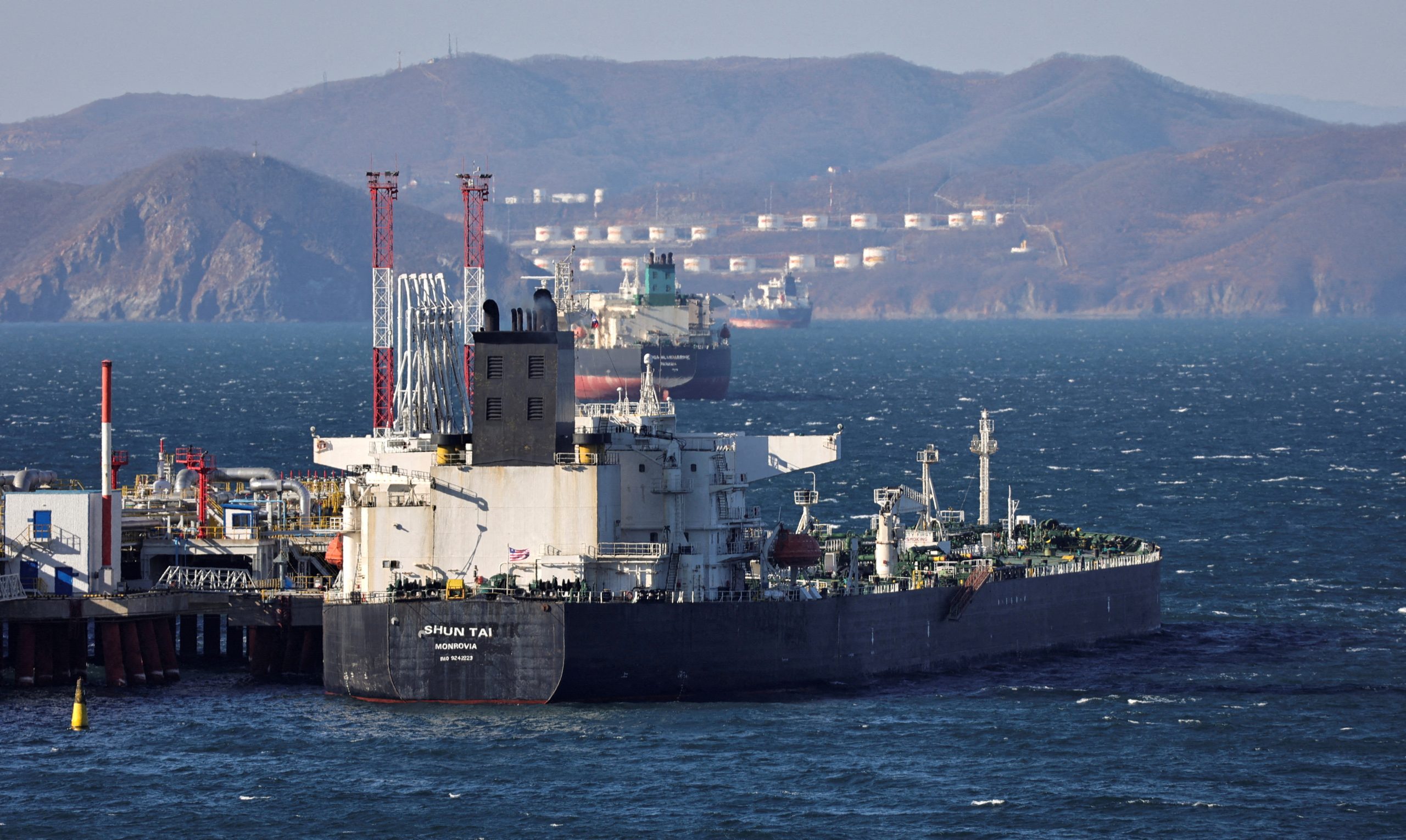A price cap on Russian oil by the U.S. and other countries is reducing how much money Russia is able to bring in, according to a Treasury Department analysis released Friday.
That analysis found that over the past month, the policy was forcing Russia to discount its oil by $19 per barrel. As of Friday morning, a normal barrel of oil was selling at about $81.
The Group of Seven, which includes the U.S., France, the U.K., Germany, Japan, Italy, and Canada, imposed a “cap” in 2022, saying the nations would not provide services such as insurance and trade finance for shipping Russian oil if it was sold at above $60 per barrel.

Russian Oil Price Cap (Credits: Reuters)
The cap, which came in response to Russia’s invasion of Ukraine, took effect in December 2022. In the first nine months of 2023, Moscow’s oil tax revenue had dropped by more than 40 percent compared to the year prior, according to the U.S. analysis.
However, it noted that as a result, Russia sought to get around the cap, sending out its oil through a “shadow fleet” — resulting in the country selling its oil above cap levels.
In response, the U.S. and its allies took further action. The new analysis said that the additional measures have resulted in some shortfalls for Russia; it said the $19 discount is steeper than the $12 to $13 discount Russian oil was seeing last October.
The analysis comes out on the same day a separate analysis from the nongovernmental organization Global Witness found that the European Union imported a significant amount of Russian oil last year due to a “loophole” in its sanctions that allows oil that has been refined into other fuels like diesel into the bloc.
Global Witness said Friday that in 2023, the EU imported 130 million barrels of fuel from refineries that process Russian oil — resulting in about $1.19 billion in tax revenue for Moscow. On Friday, the U.S. also announced additional sanctions on Russia over the death of opposition figure Alexei Navalny.
























